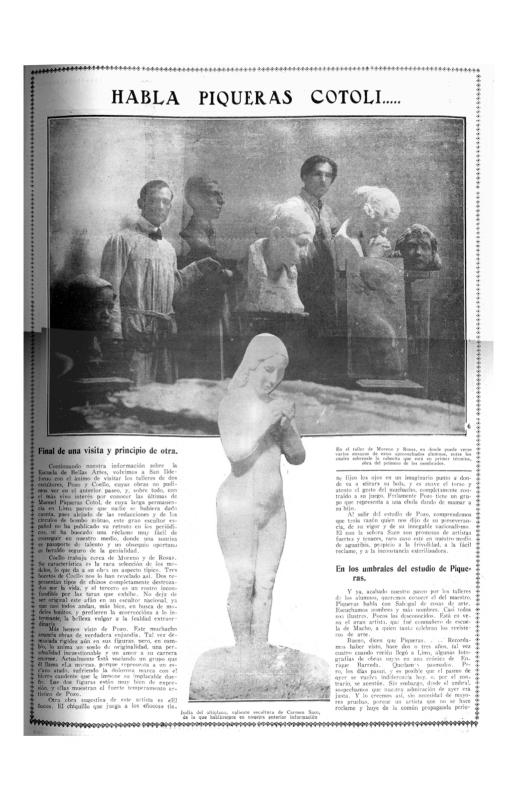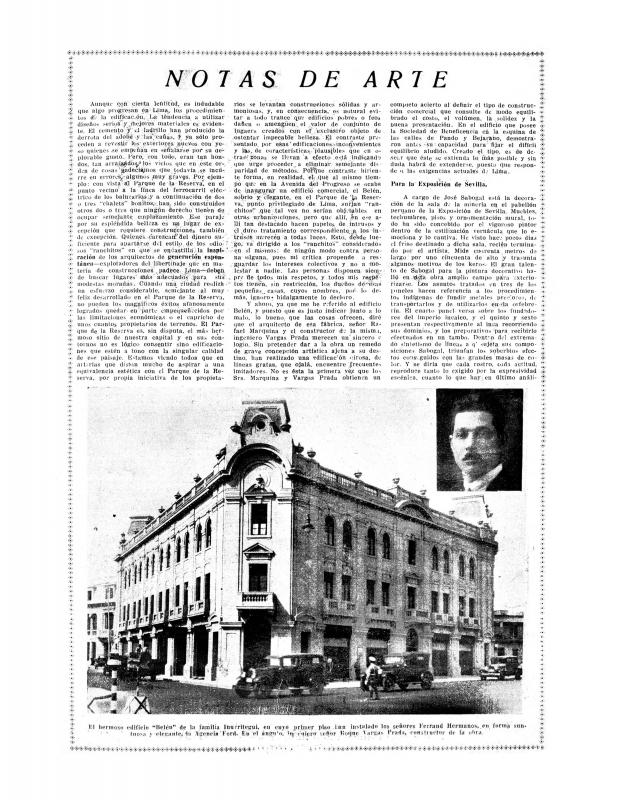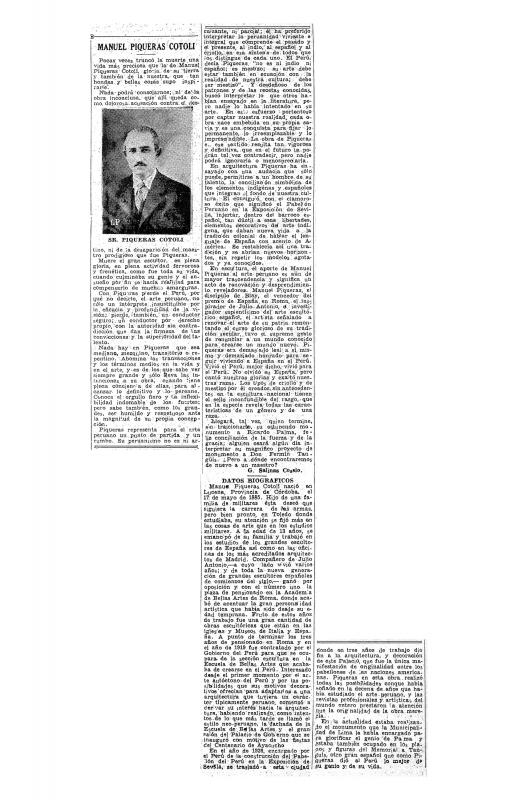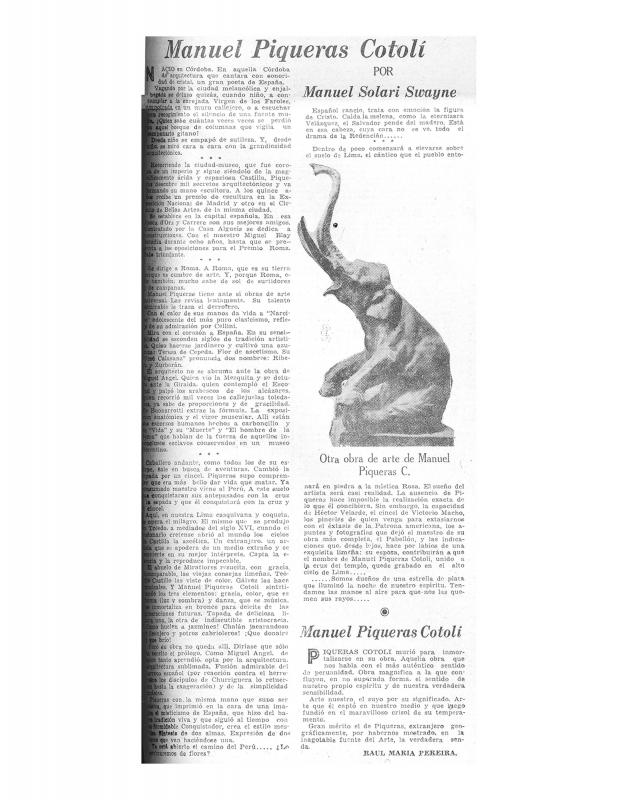This document is the transcription of the Radio Internacional (Lima) interview conducted by critic Carlos Raygada with architect Héctor Velarde, agent for the future Basílica de Santa Rosa de Lima, which was designed by the deceased Manuel Piqueras Cotolí. Manuel Piqueras Cotolí was a Spanish architect, sculptor, and urban planner (residing in Peru since 1919). In Madrid, he had been a member of renowned artist Miguel Blay’s sculpture workshop, and worked both in the Codina foundry and the Algueis construction firm; later he studied at the Academia de España (in Rome). He relocated to Peru to take charge of the recently created sculpture department at the Academia Nacional de Bellas Artes (ENBA). Founded in 1919, the ENBA was initially part of a civil initiative (during the José Pardo presidency, 1915–19), and its goal was to establish the European Noucentisme movement in the country. Its first director, Daniel Hernández, encouraged the development of the nationalistic tendencies (during the presidency of Augusto Leguía, 1919–30) that would ultimately be the hallmark of the school, chiefly exemplified by painter José Sabogal and by Piqueras Cotolí himself, who developed the “neo-Peruvian style,” which was characterized by the synthesis of vice-regal and pre-Columbian elements [see in the ICAA digital archive by Carlos Solari “Habla Piqueras Cotolí” (doc. no. 1141340)]. At the beginning, the vice-regal elements constituted the structural form, while the pre-Hispanic characteristics served a decorative function, but as time passed the fusion achieved more complexity, and bore relation to the contemporary European modern trends. The ENBA façade (Lima, 1924) was Piqueras Cotolí’s first noteworthy work, and that same year he also designed the reception hall at the Palacio de Gobierno (Lima) to mark the centennial of the Battle of Ayacucho. In 1929, he unveiled the Peruvian Pavilion, which is considered his greatest work and which featured a main staircase that served as its symbolic center, at the Exposición Iberoamericana de Sevilla [see Solari’s other essay, written under his “Don Quijote” pseudonym, entitled “Notas de arte: para la exposición de Sevilla” (doc. no. 1140871)]. Upon his return, and after the fall of the Leguía regime (1930), he was removed as director of the ENBA and was instead named an advisor to the Escuela de Artes y Oficios (Lima). Outstanding works from his final period include the marble sculpture of Hipólito Unanue (Parque Universitario, Lima, 1931); an incomplete work meant to pay homage to writer Ricardo Palma; and a draft of his plans for the Basílica de Santa Rosa. The inspiration for this project, which was simultaneously modern and pre-Columbian, generated a fierce debate regarding the relevance of indigenist influences and the neo-Peruvian style, a style that did not have direct followers, but was related to the art produced by artists working on a national art initiative on the margins of José Sabogal’s group, including Elena Izcue (1889–1970), Jorge Vinatea Reinoso (1900–31), and Alejandro González Trujillo “Apu-Rimak” (1900–85). Piqueras Cotolí influenced Peruvian architects Héctor Velarde and Emilio Harth-Terré, articulating works using the theories of Argentineans Martín Noel (1888–1963) and Ángel Guido (1896–1960), both architects who explored the mestizo-vice-regal style. [For complementary reading on this artist, see also the following texts in the archive: by G. Salinas Cossío “Manuel Piqueras Cotolí” (doc. no. 1136631), and by Manuel Solari Swayne “Manuel Piqueras Cotolí” (doc. no. 1141324)].




